AI agents are becoming a major part of how businesses automate workflow and operations. According to PwC, 79% of companies already use AI agents, and most have seen measurable productivity improvements. But not every agent works the same way. Some follow basic rules, some learn from data, and others work together to handle complex tasks.
This blog explains the types of AI agents in a simple way so you can understand how each one supports real business needs, with real-world examples, explore how they are different from each other, and more.
Types of AI Agents in Detail

1. Simple Reflex Agents
These types of agents operate based on conditions and action rules. The structure and lead of this type of AI agent take action based on the current perception, without referencing past states or future goals. Among the different types of AI agents, the simple reflex model is the most basic, offering immediate responses to well-defined scenarios.
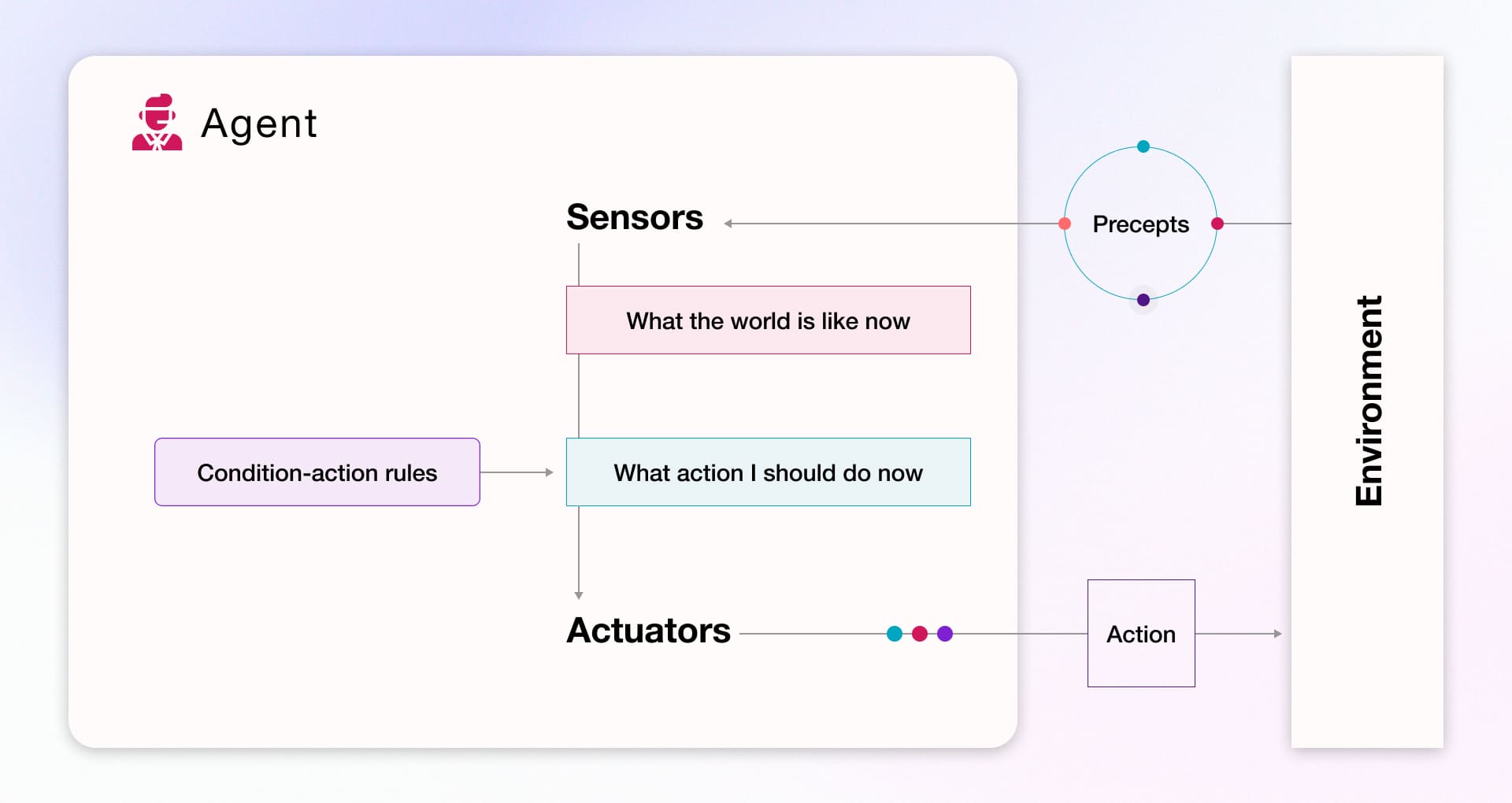
Benefits
- Fast Decision-Making: Immediate rule-based responses enable low-latency actions.
- Low Computational Cost: No memory, learning, or evaluation layer reduces processing overhead.
- High Reliability in Static Environments: Performs consistently when rules and conditions are stable.
How It Works
Simple reflex agents use a set of predefined if-then rules. When a perception matches a condition, the corresponding action is triggered. There is no internal state, meaning the agent cannot learn, track history, or adapt. This mechanism is effective only when the environment is fully observable and predictable.
2. Model-Based Reflex Agents
Model-based reflex agents extend the simple reflex design by maintaining an internal state. This state represents information about the environment that is not directly observable. Within the different types of AI agents, this model offers improved adaptability by updating its internal representation after each percept.
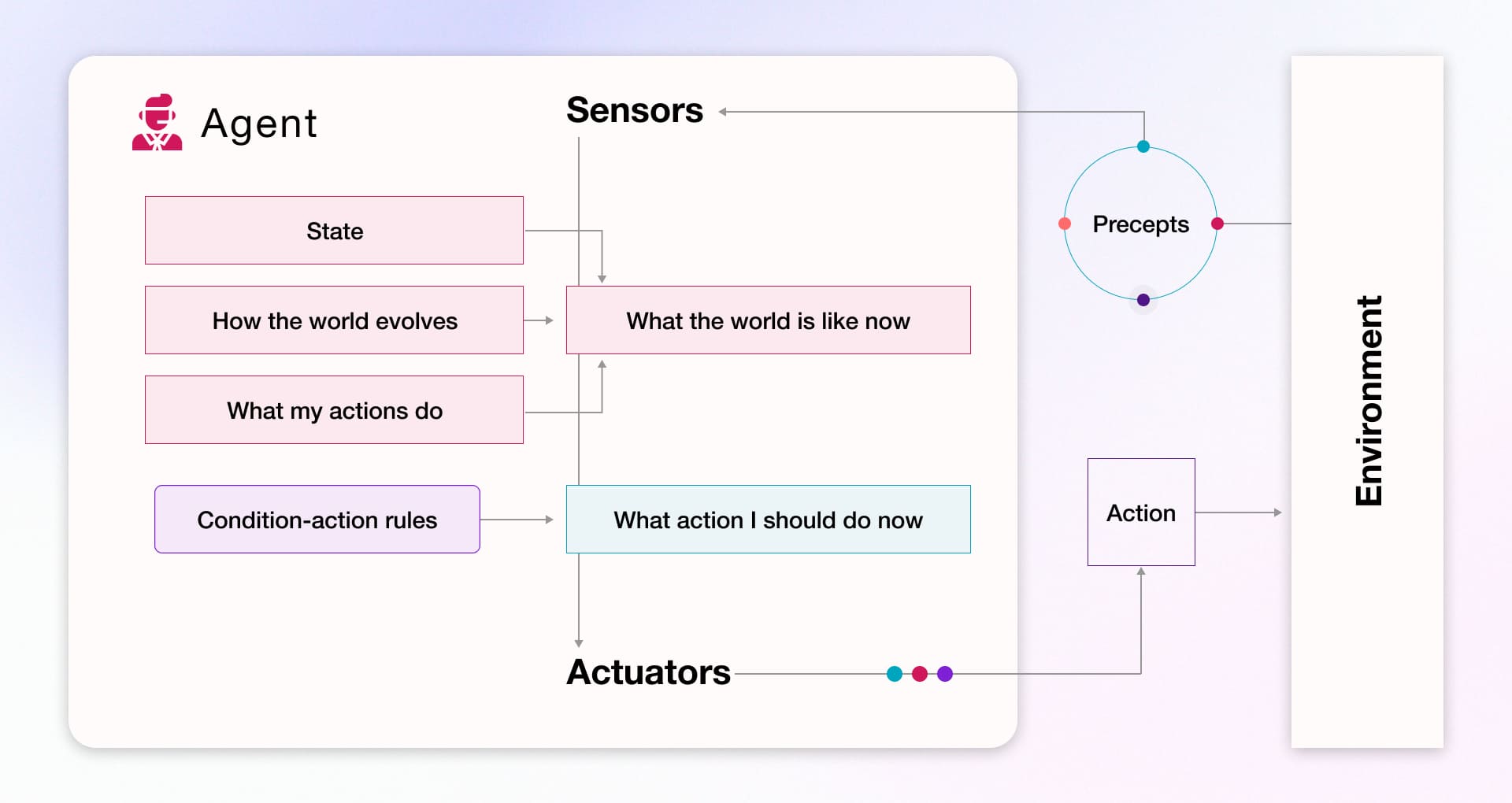
Benefits
- Handles Partial Observability: Works effectively even when all environmental data is not visible.
- Better Context Awareness: Maintains continuity between past and present percepts.
- Improved Accuracy: Reduces incorrect actions caused by incomplete information.
How It Works
The agent combines the current perception with its internal model to determine the next action. The model updates continuously, allowing the agent to interpret hidden or missing environmental factors before selecting an appropriate rule-based action.
3. Goal-Based Agents
Goal-based agents operate by selecting actions that help them achieve specific objectives. They do not rely completely on conditions; instead, they evaluate possible actions based on whether those actions move the agent closer to its defined goal. Among the types of AI agents, this model introduces intentional decision-making.
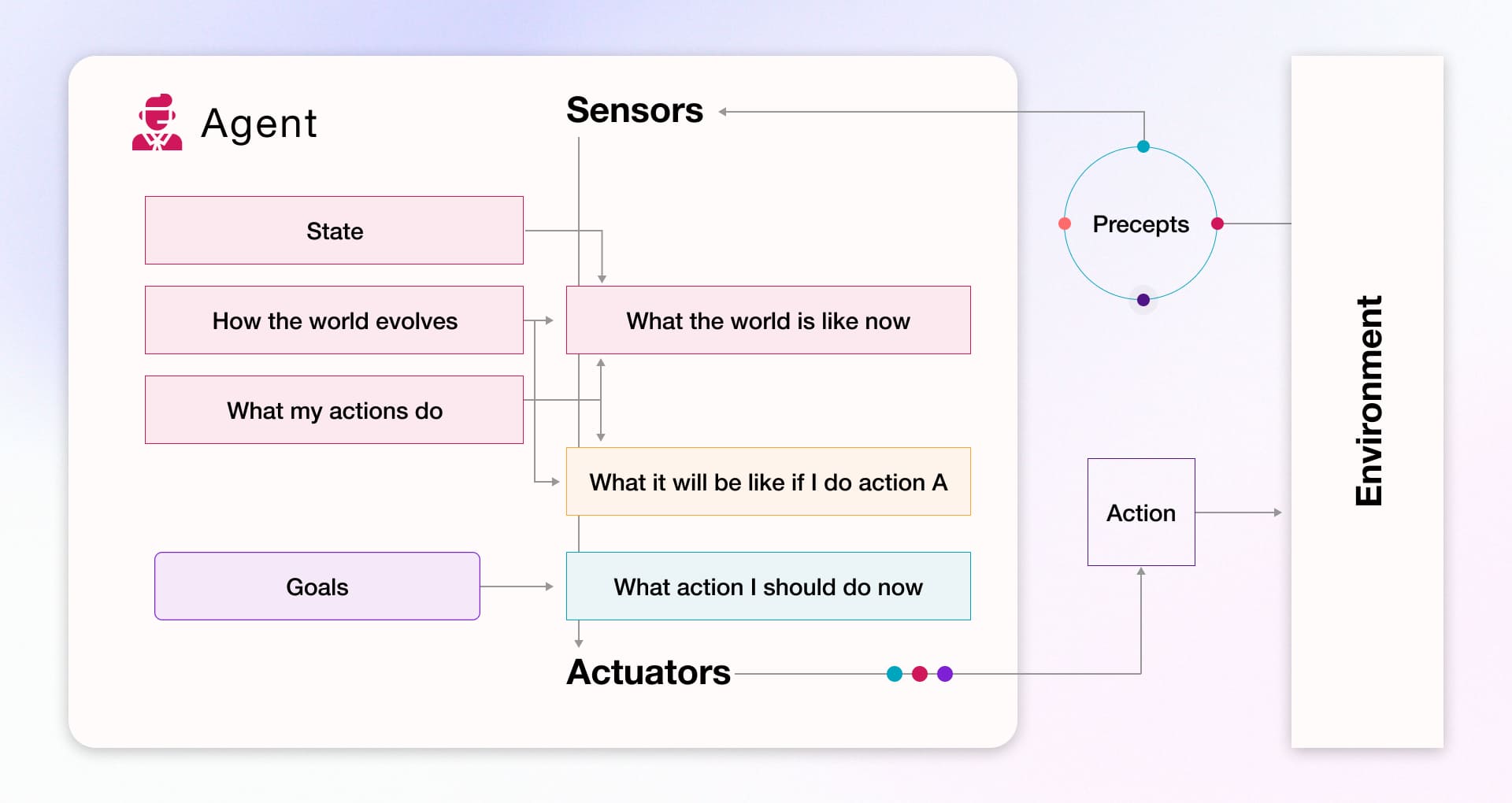
Benefits
- Flexible Decision-Making: Can evaluate multiple possible actions.
- Supports Complex Tasks: Effective for planning, navigation, and multi-step scenarios.
- Outcome-Oriented: Ensures actions directly align with desired results.
How It Works
The agent uses goal evaluation to compare available actions. It chooses the action that best satisfies the current goal, often using search or planning mechanisms to determine the optimal path.
4. Utility-Based Agents
Utility-based agents optimize decisions by measuring the utility (usefulness or value) of each possible action. This type is used when more than one action achieves the goal but with different quality levels. Among the different types of AI agents, utility-based models exhibit preference-driven, outcome-maximizing behavior.
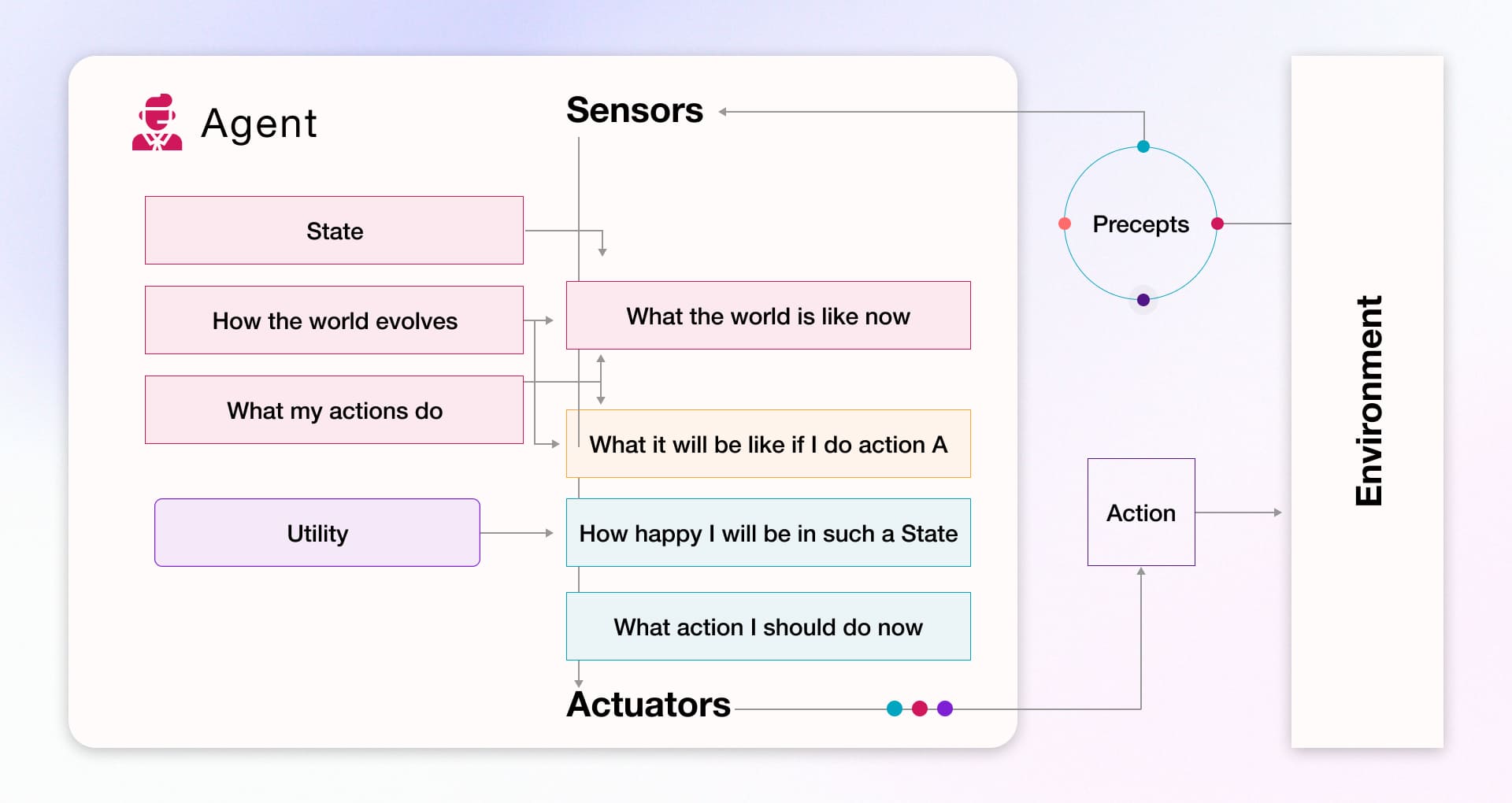
Benefits
- Optimized Decision Quality: From a list of actions, it can go with the most ideal or beneficial action
- Balances Trade-offs: Considers cost, risk, and reward in decisions.
- Suitable for Dynamic Environments: It can be an ideal type of AI agent that performs brilliantly when outcomes keep changing.
How It Works
The agent assigns a utility score to each potential action. It then selects the action with the highest utility value to maximize overall performance or satisfaction in a given situation.
5. Learning Agents
As the name suggests, learning agents are a type of AI that keep improving over time based on the feedback they receive, the experiences they go through, and the interactions they handle. Pre-defined rules are not something these AI agents rely fully on, but they adapt their behavior. This makes them among the most advanced types of AI agents, well-suited to evolving and uncertain environments.
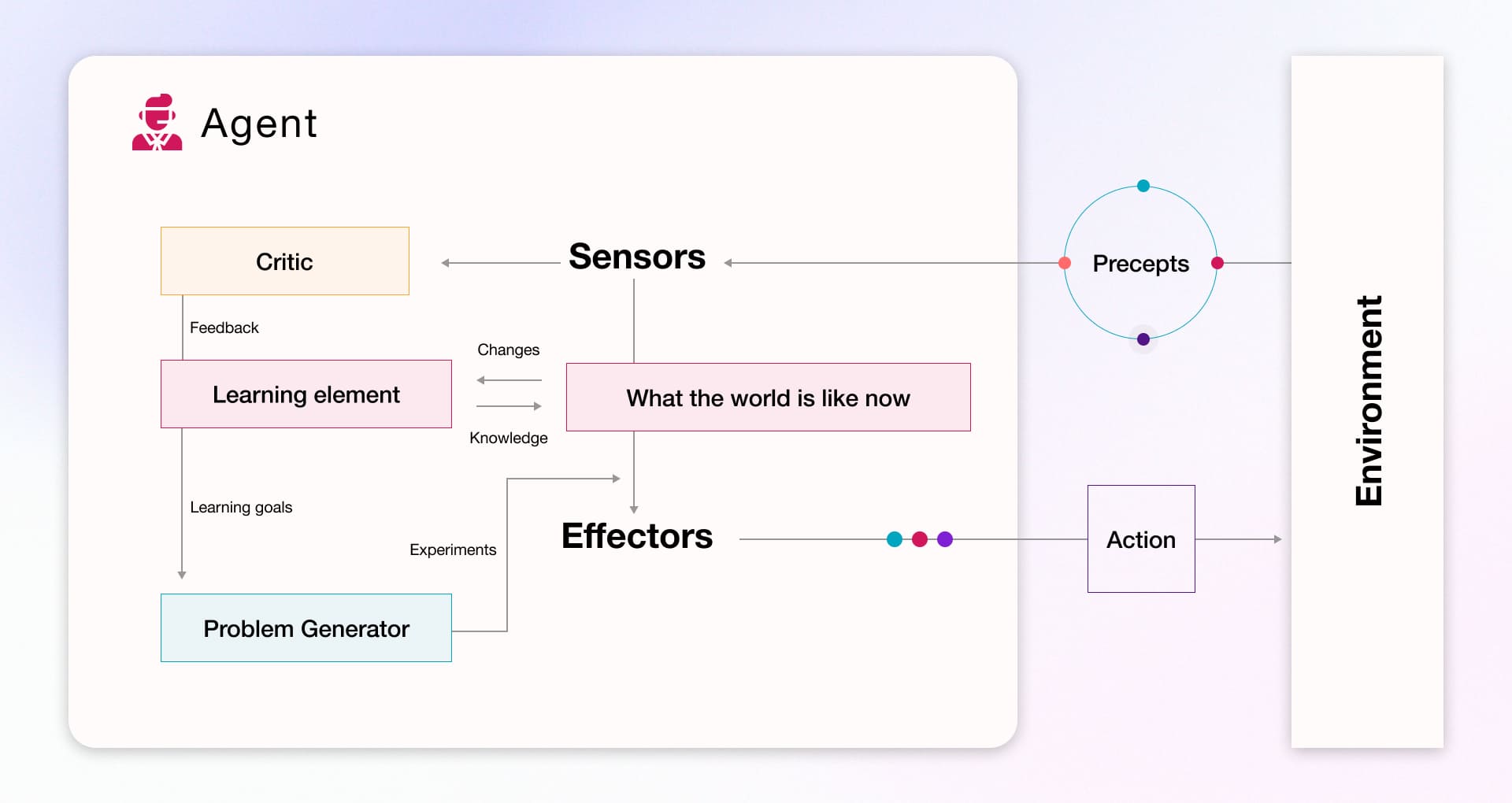
Benefits
- Continuous improvement: The more data it feeds on, the more it turns into more accurate and operation-driven.
- Adaptive behavior: It has the capability to adjust and adapt based on the situation and experience.
- Fewer manual rules: You don’t have to keep writing new condition-action rules.
How It Works
Learning agents utilize a learning element to update their internal model and a performance element to act based on the updated knowledge. Through reinforcement, supervised signals, or experience, they refine their decision-making processes.
6. Multi-Agent Systems (MAS)
A multi-agent system consists of multiple autonomous agents interacting within a shared environment. Each agent has independent capabilities, but together they coordinate to solve complex tasks. In the landscape of different types of AI agents, MAS represents a collective intelligence model.

Benefits
- Scalable Problem-Solving: Distributes tasks across multiple agents.
- Robustness: If one agent fails, others can continue functioning.
- High Efficiency: Enables parallel processing and cooperative decision-making.
How It Works
Agents communicate, negotiate, or collaborate to achieve system-wide goals. Coordination mechanisms such as shared knowledge bases, communication protocols, or distributed planning guide their behavior.
Comparison of AI Agent Types
| AI Agent Type | Core Principle | Memory / Internal State | Decision Basis | Environment Suitability | Strengths | Limitations |
| Simple Reflex Agents | Condition–action rules | No | Direct percept | Fully observable, static | Fast response, low cost | Fails in dynamic or partially observable environments |
| Model-Based Reflex Agents | Uses an internal model + rules | Yes | Updated state + percept | Partially observable | Better context awareness | Limited reasoning and no goal evaluation |
| Goal-Based Agents | Actions chosen to reach a defined goal | May maintain state | Goal satisfaction and action outcomes | Dynamic environments | Flexible and purposeful decisions | Requires search/planning; more computation |
| Utility-Based Agents | Chooses action with highest utility value | Yes | Utility evaluation | Complex, variable outcomes | Handles trade-offs; optimal choices | Needs utility functions; complex to design |
| Learning Agents | Improves behavior through experience | Yes (continuously updated) | Past experiences + learning feedback | Changing, unpredictable | Adaptive, self-improving | Needs training data; may be resource-heavy |
| Multi-Agent Systems (MAS) | Multiple agents interacting cooperatively or competitively | Yes (distributed across agents) | Agent interaction + shared goals | Large-scale, distributed systems | Scalable, robust, parallel problem-solving | Coordination complexity; communication overhead |
Practical Challenges When Deploying Different AI Agent Types & Their Solutions
Each type of AI agent also has its own drawbacks for deployment or adoption. This section highlights the significant challenges you may face with each AI agent and guides you toward the right solution path.
1. Simple Reflex Agents
Challenge: They work on fixed rules, so any unexpected change in the environment immediately affects their output.
Solution: Strengthen the rule set based on real scenarios or move to an agent type that can handle more context when the task demands it.
2. Model-Based Reflex Agents
Challenge: Their internal view of the environment can become outdated, leading to decisions that don’t match the actual situation.
Solution: Update the stored information regularly and improve the inputs so the agent always works with fresh and reliable data.
3. Goal-Based Agents
Challenge: When there are too many possible actions, these agents take longer to decide, slowing down overall performance.
Solution: Limit unnecessary choices and include faster decision paths to enable the agent to reach its goal without delay.
4. Utility-Based Agents
Challenge: Defining what “best outcome” means is difficult because different situations may require different priorities.
Solution: Set clear evaluation criteria with domain experts and refine the scoring model using real-world examples.
5. Learning Agents
Challenge: They need time to learn, and their early decisions may not always be reliable.
Solution: Train them in a controlled setup, guide them with feedback, and only deploy them fully once their behavior becomes stable.
6. Multi-Agent Systems (MAS)
Challenge: When multiple agents work together, they may overlap tasks or fail to coordinate effectively.
Solution: Define simple communication rules, assign clear responsibilities, and ensure all agents follow a shared operating process.
AI Agents Use Cases
From understanding the different types of AI agents with examples to exploring their drawbacks, it’s clear that each agent has its own attributes, and their real-world usage also varies. In this section, we’ll look at the use cases of AI agents to help identify which one fits best.
1. Simple Reflex Agents – Use Cases
- These agents work on fixed rules and respond only to the current input.
- Email spam filters block messages based on keywords or patterns.
- Thermostats that switch heating/cooling based on the current temperature.
- Basic customer support bots that give predefined answers to direct questions.
- Factory alarm sensors that react instantly when a threshold is crossed.
- Traffic signals that change based on the present vehicle movement.
2. Model-Based Reflex Agents – Use Cases
They use both current inputs and a bit of past context to decide what to do.
- Smart home lights that turn on/off based on your recent movement pattern.
- Context-aware chatbots that remember your last message to keep the flow natural.
- Warehouse robots that track obstacles and update their internal map while moving.
- Navigation apps that adjust routes based on your recent location history.
- Monitoring tools that compare the current system state with previous logs to trigger alerts.
3. Goal-Based Agents – Use Cases
These agents act with a clear objective in mind.
- Self-driving cars that plan actions to reach your destination safely.
- Search engines that choose the best results to match your intent.
- This type of AI agent for fraud detection helps identify actions harming the goal of secure transactions.
- Workflow automation tools that complete tasks step-by-step toward a final goal.
- Route-planning apps that pick directions designed to reach a location fastest.
4. Utility-Based Agents – Use Cases
They aim to maximize the “best possible outcome,” not just reach a goal.
- Autonomous drones selecting the safest and fastest delivery route.
- Dynamic pricing engines adjusting product prices to balance profit and customer interest.
- Investment advisers (AI-based) predicting the best combination of low risk and high return.
- Energy management systems balancing cost and comfort in buildings.
- Healthcare tools recommending treatments with the highest success probability.
5. Learning Agents – Use Case
Learning agents improve with every new piece of data and help teams make smarter choices.
- Customer activity becomes easier to understand, making it simple to predict who might leave or buy again.
- Sales teams get clearer forecasts based on past trends and current signals.
- Store managers can plan stock better because the system learns what sells quickly across seasons.
- Support chatbots respond more accurately as the model absorbs past conversations.
- Financial teams get updated risk checks that adapt to real customer behavior.
6. Hybrid / Autonomous Agents –Use Cases
Hybrid agents combine rules, goals, and learning. The result is a system that can handle an entire task from start to finish.
- Routine office actions such as approvals, reminders, and follow-ups run smoothly without manual effort.
- Sales pipelines stay organized with automatic lead tracking and next-step suggestions.
- Supply chains move more efficiently as orders, delays, and changes are handled in real time.
- Business operations stay stable because issues are spotted early and shared with the right team.
- Marketing campaigns become more precise as each customer receives content that matches their needs.
Choose the Right AI Agent for Your Business Needs with Rishabh Software
Building the right AI agent begins with knowing what you want to achieve and how your data supports it. At Rishabh Software, our AI agent development services help you create agents that work smoothly in everyday business needs, whether it’s customer support, task automation, forecasting, or quick decision-making. Leveraging our AI consulting expertise to turn small ideas into practical solutions that you can rely on. If you plan to add AI agents to your systems, we’ll guide you with the right steps and build solutions that grow with your business.
Frequently Asked Questions
1. How do reactive AI agents differ from deliberative AI agents?
A: Reactive agents are known for its act instantly nature that is based on current input. On other hand deliberative agents think, plan, and then act. Reactive = quick response; deliberative = goal-driven decisions.
2. What separates multi-agent systems from single AI agents?
A: A single agent works alone on one task, while a multi-agent system includes many agents working together. Multi-agent setups share information and coordinate actions. Read our blog on agentic AI for software development.
3. Which industries use intelligent agents for automation?
A: Almost every next business vertical can leverage AI agents, or it’s one of the types in one and other ways, with the help of a tech expert like us. Still AI agent is blessing for manufacturing, healthcare, retail, fintech, and other relatable businesses


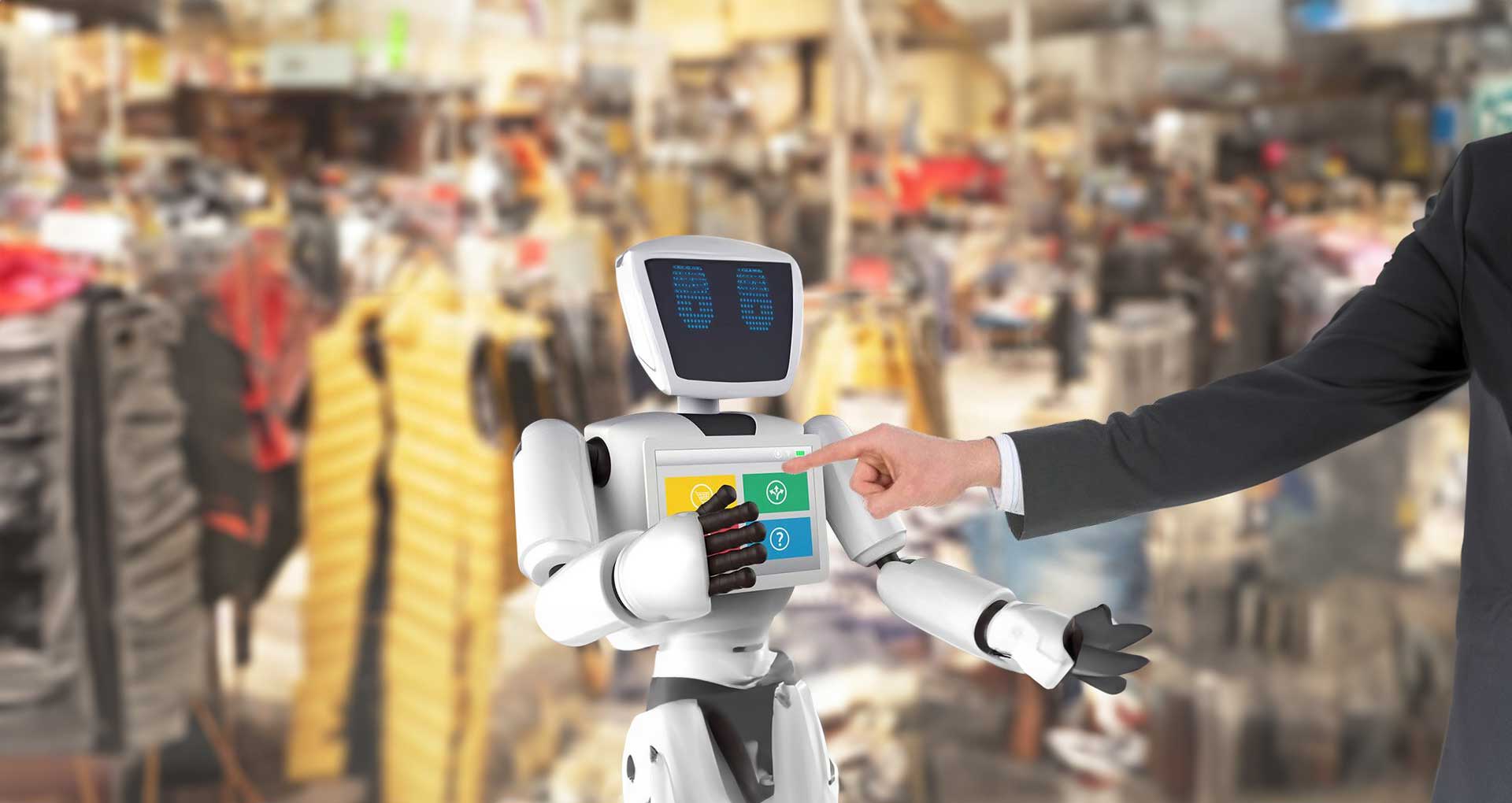

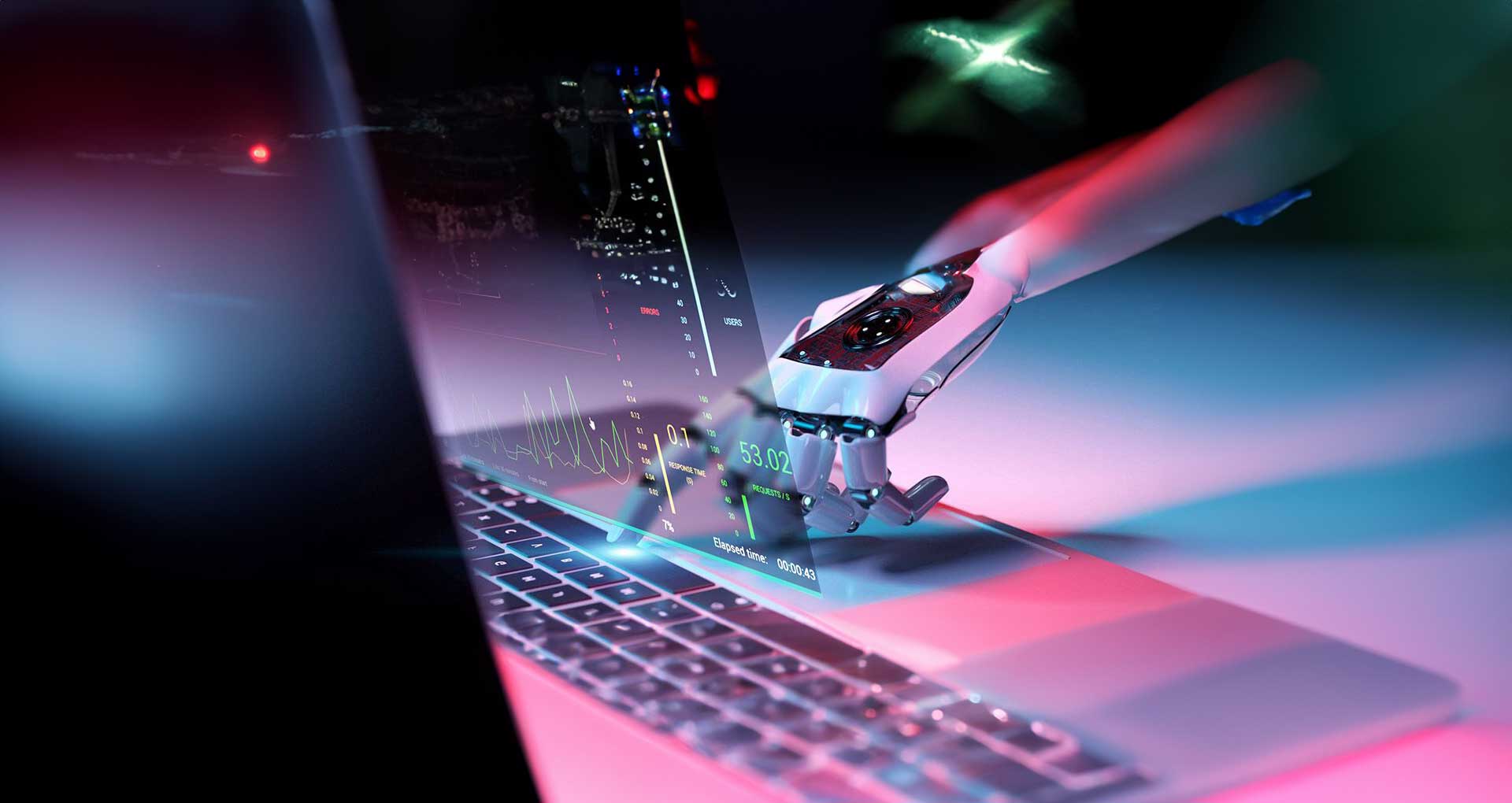
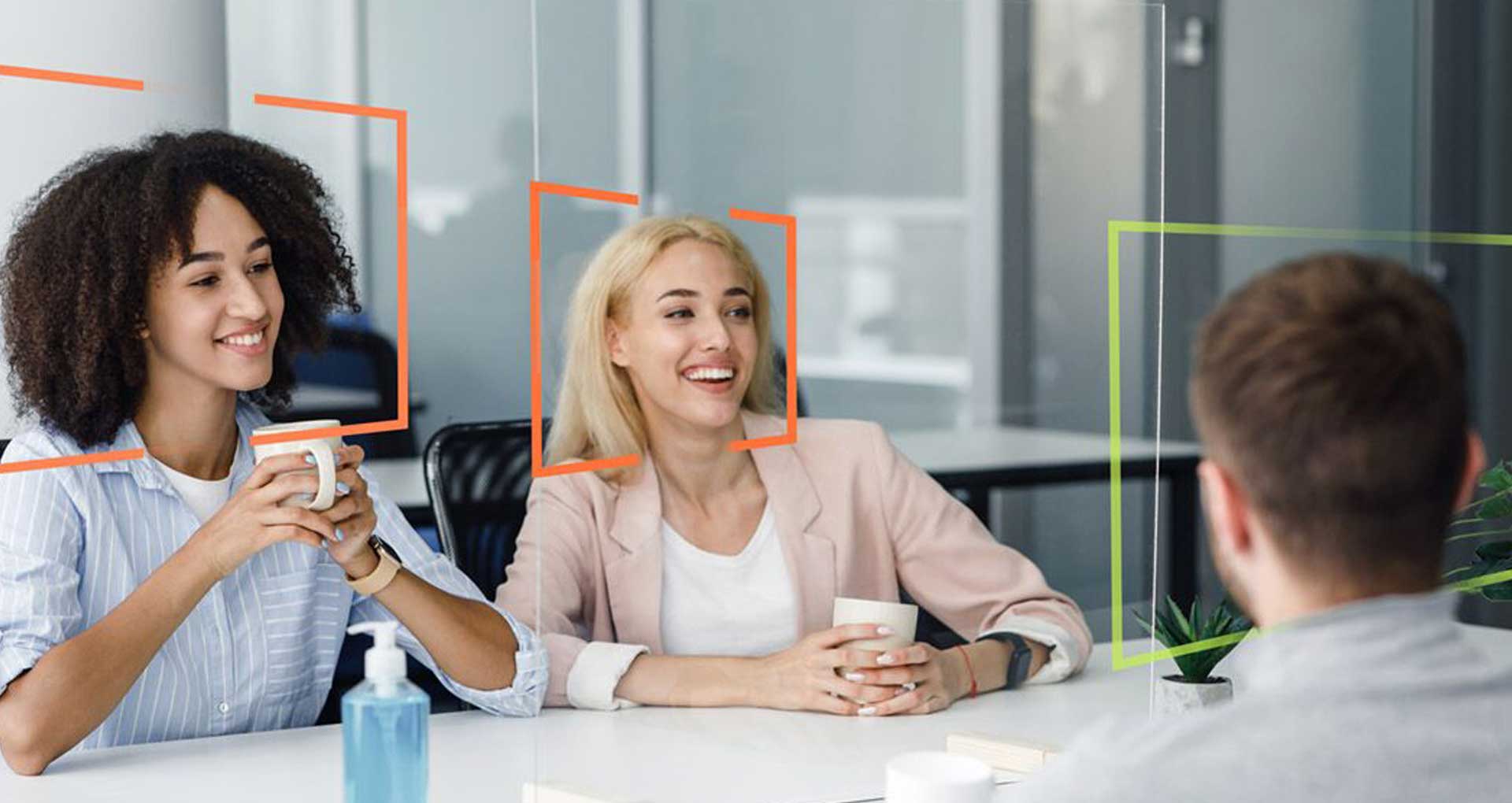





 30 Min
30 Min


